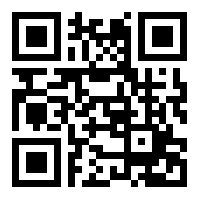QR code
Updated: 12/30/2021 by Computer Hope

Invented in 1994 by Denso Wave, the Quick response code, or QR code, is a two-dimensional barcode with a larger storage capacity than the standard UPC (universal product code). Its uses include product packaging, advertisements, and labeling of products on the shelves of retail stores. QR codes often contain information about a product or is a link to a website about the product.
Note
The QR code technology was developed in Japan, for use in their automotive industry.
App, Barcode, Business terms, Computer acronyms, Hardware terms, Internet terms, Matrix code, Phone terms, Semacode, Software terms
